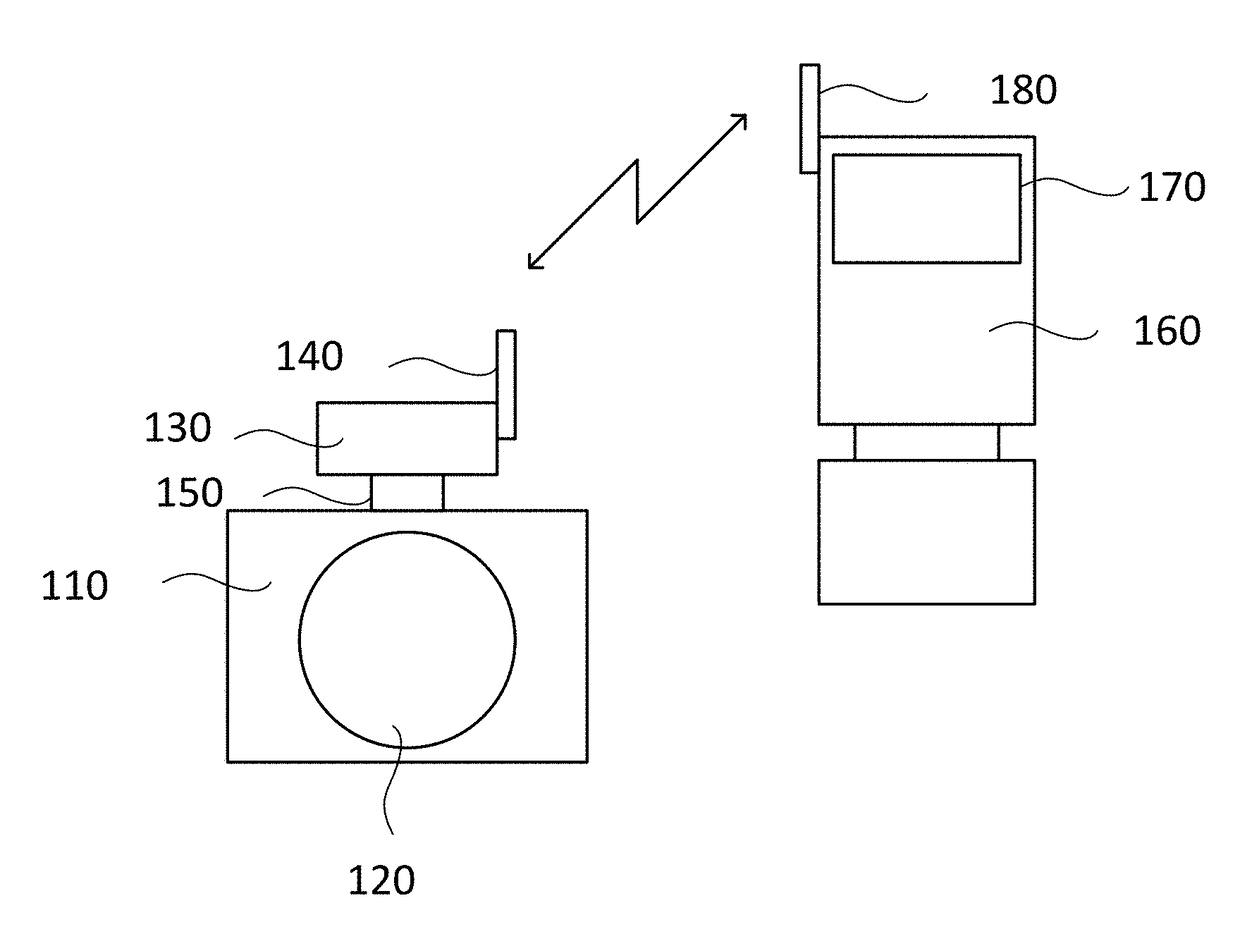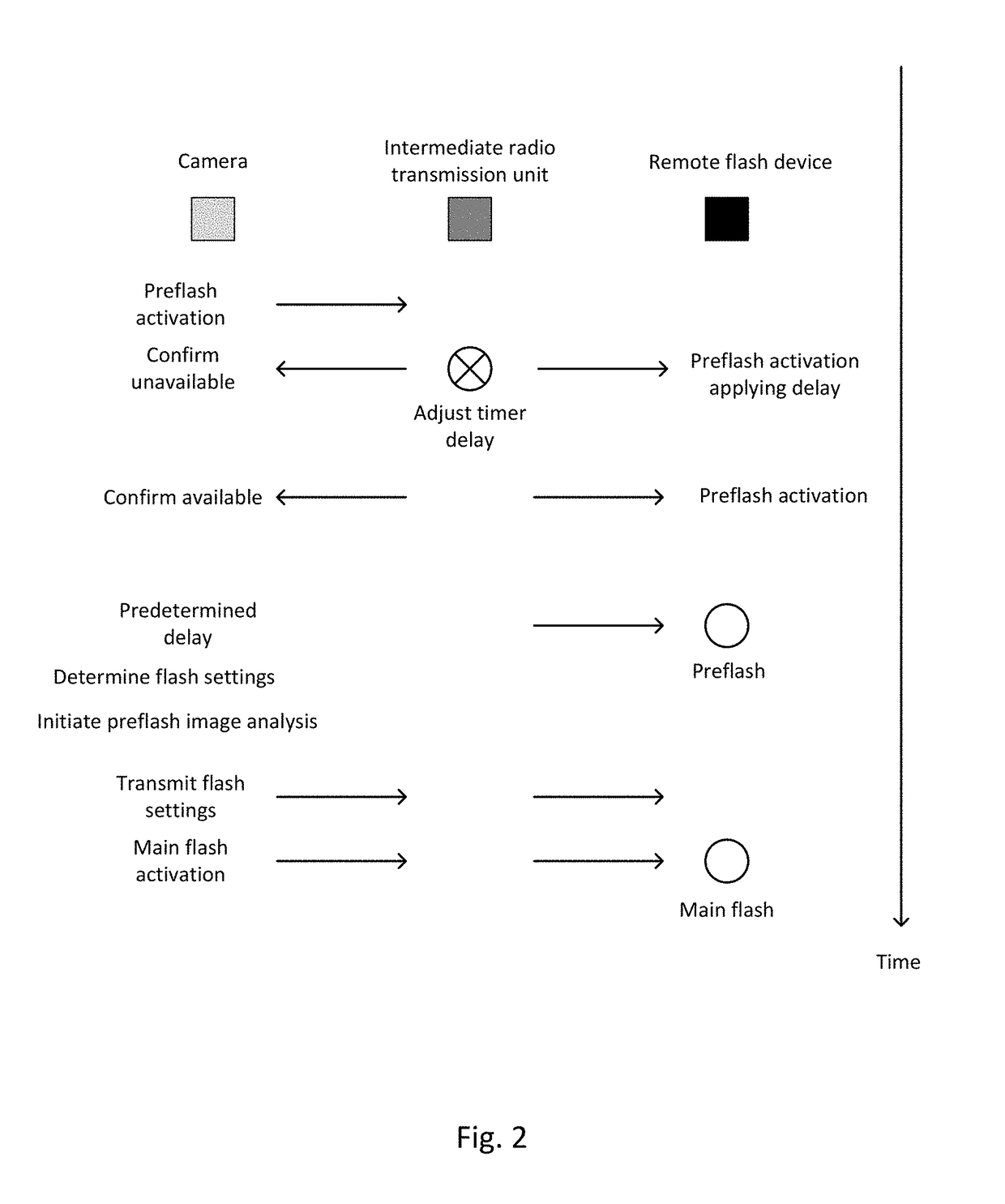Method, transmission unit, system and computer program for wireless communication between a camera and at least one remote flash device
a technology of remote lighting and transmission unit, applied in the field of communication, can solve the problems of difficult or even impossible to satisfy all requirements if complete operability, remote lighting device not providing any information back, and flash produced by means of rather inconvenient arrangements, etc., to achieve compatibility between devices, simplify the process, and widen the range of options
- Summary
- Abstract
- Description
- Claims
- Application Information
AI Technical Summary
Benefits of technology
Problems solved by technology
Method used
Image
Examples
Embodiment Construction
[0031]Throughout this document, the term flash refers either to the flash of light itself or to the electronic flash unit discharging the light.
[0032]Through-the-lens (TTL) flash photographic control originally appeared in about 1980 in analogue form and has later been transformed into digital TTL, which is even more accurate also allows for more advanced functionality. The main features of digital TTL are that prior to the actual exposure and the firing of the main flash, one or more small flashes called preflashes are emitted. The light returning through the lens is measured and this value is used to calculate the amount of light necessary for the actual exposure. Multiple preflashes can be used to improve the flash output. Canon refers to this technique as “E-TTL” and has recently improved the system with a new generation “E-TTL II”. The first form of digital TTL by Nikon, called “D-TTL”, was originally introduced, and since then, the superior “i-TTL” system has been promoted. Fr...
PUM
 Login to View More
Login to View More Abstract
Description
Claims
Application Information
 Login to View More
Login to View More - R&D
- Intellectual Property
- Life Sciences
- Materials
- Tech Scout
- Unparalleled Data Quality
- Higher Quality Content
- 60% Fewer Hallucinations
Browse by: Latest US Patents, China's latest patents, Technical Efficacy Thesaurus, Application Domain, Technology Topic, Popular Technical Reports.
© 2025 PatSnap. All rights reserved.Legal|Privacy policy|Modern Slavery Act Transparency Statement|Sitemap|About US| Contact US: help@patsnap.com



